 |
A fine view of the Coach and
Horses on Cannock Road, Wolverhampton around the turn of the
twentieth century. |
| The Coach and Horses in 1932.
From Butler's magazine. |
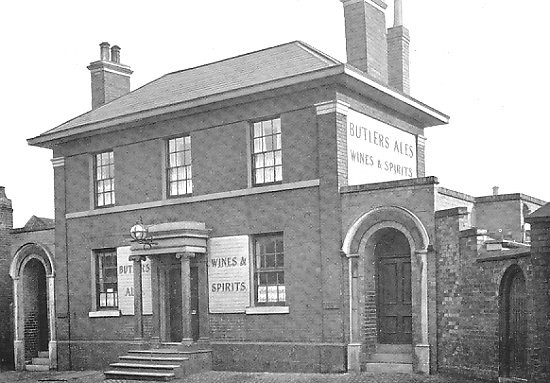 |
 |
The smoke room in the Coach and
Horses in 1932. From Butler's
magazine. |
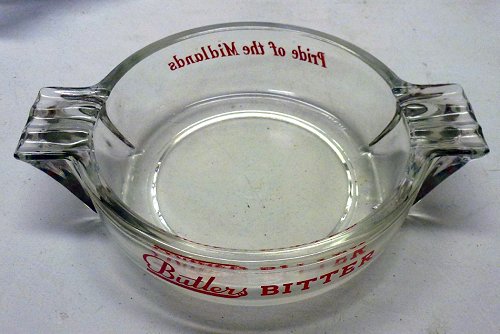
A Butler's ashtray. Courtesy of Frank Sharman.

A new pub, the Bushbury Arms, Low Hill,
Wolverhampton, which opened in December 1928.
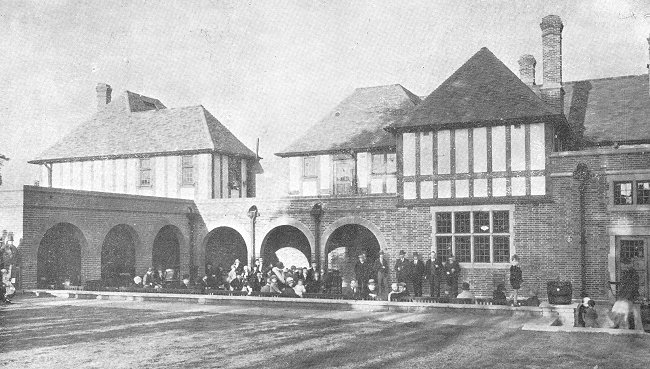
A rear view of the Bushbury Arms. From
Butler's magazine.
| A dance in the assembly room at
the Bushbury Arms. From
Butler's magazine, August 1929. |
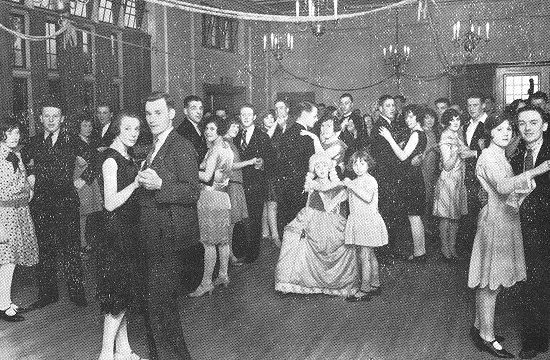 |

From the January 1929 edition of Butler's
magazine.
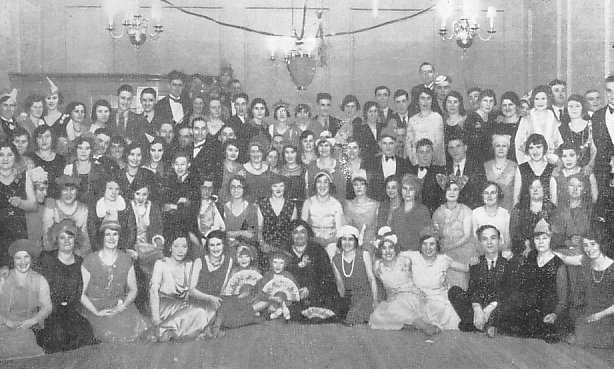
New Year's Eve 1931 celebrations at the
Bushbury Arms.
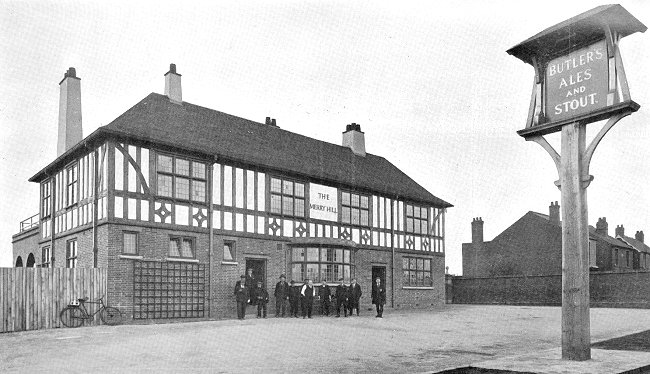
Another new Butler's pub, the Merry Hill,
Merry Hill, Wolverhampton. From Butler's magazine, May 1931.
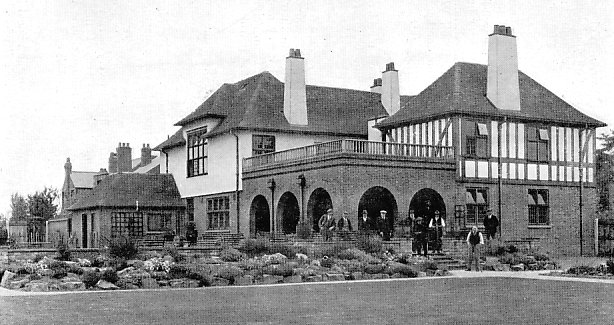
Another view of the Merry Hill. From Butler's
magazine, July 1931.
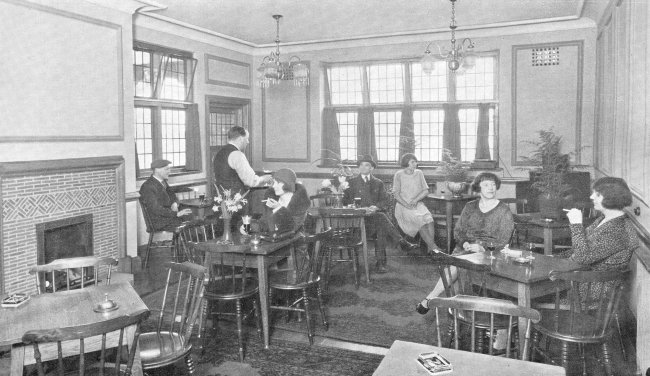
The interior of the Merry Hill. From Butler's
magazine, May 1931.
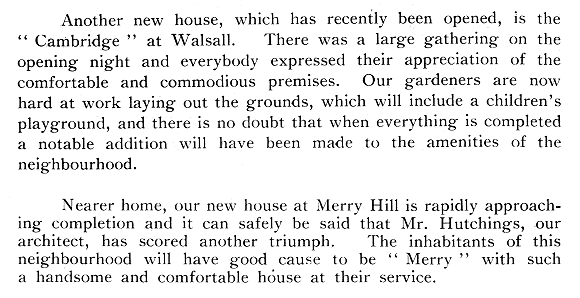
From the February 1930 edition of Butler's
magazine.
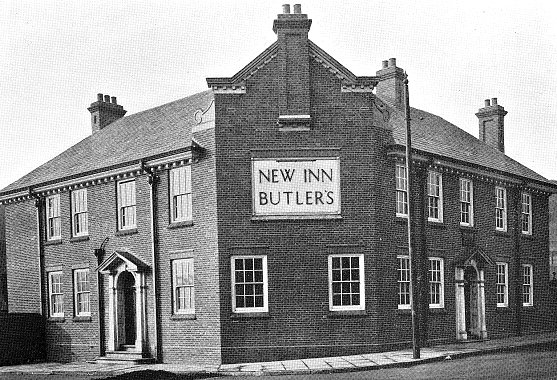 |
Another Butler's pub, the New Inn
in Willenhall. From Butler's
magazine June 1932. |

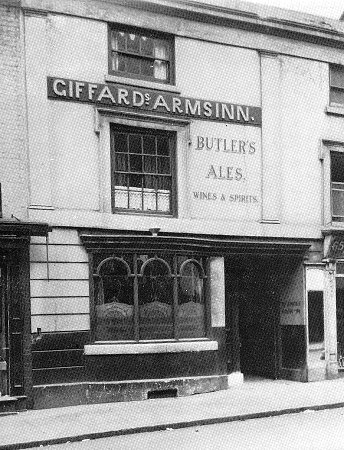 |
|
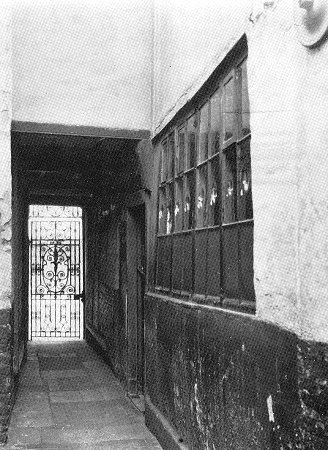 |
|
The old
Giffard Arms. |
|
| The smoke room in the
old Giffard Arms. |
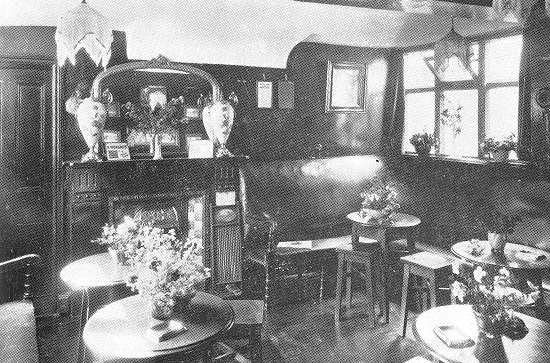 |
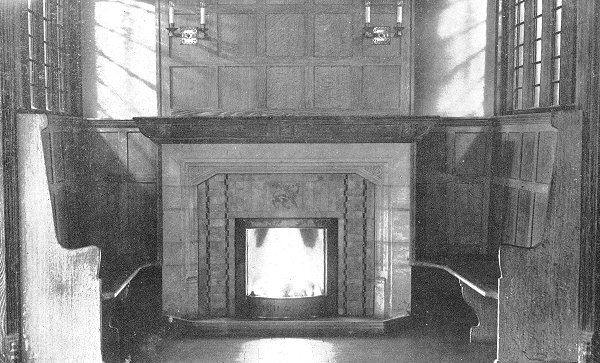 |
The inglenook fireplace in the old
Giffard Arms. |
| The temporary Giffard Arms. |
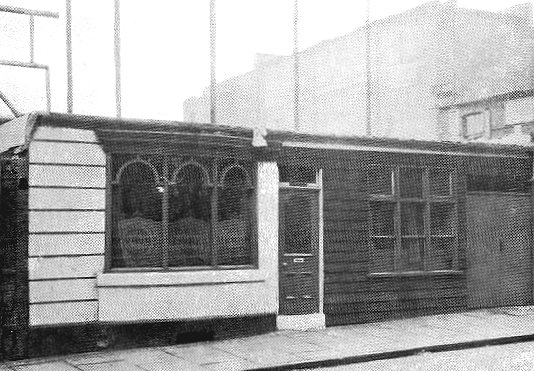 |
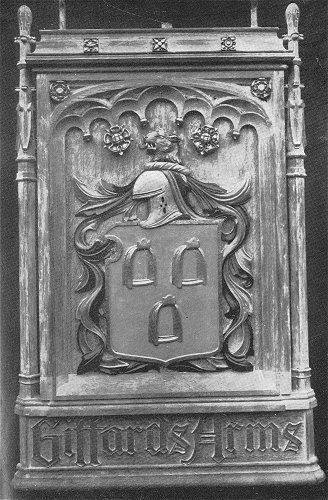 |
|
From
Butler's magazine, January 1930.
The Giffard
Arms, Wolverhampton
The following article
appeared in the" Express and Star" on
December 17th 1929, and is reproduced by the
courtesy of that newspaper :
One of the most
interesting architectural features of the
new Victoria Street, Wolverhampton, is "The
Giffard Arms," opened today, the recessed
frontage of which, built in a design of
Tudor spirit, relieves the flat faces of the
other new buildings on either side of it.
The remaining small portion of the old house
was removed this morning.
"The Giffard Arms" is built on the site
of an old inn that had many unusual
features, such as a fine wrought iron gate,
ancient oak beams, and old glass to
recommend it. The public spirit of a great
commercial house is made evident in the
desire of the owners, Messrs. Butler and
Co., Ltd., Springfield Brewery,
Wolverhampton, to make a noteworthy effort
to beautify an important thoroughfare in the
borough by the design of their new building.
The dominating feature is the bay, 40ft.
high and 20ft. wide, carrying the principal
windows, which gives an air of dignity to
the whole front. |
|
|
|
Links with the Past.
Though modern in
design, "The Giffard Arms" keeps intact a
series of links with the past, old time
associations being commemorated in carved
bosses and shields, which display various
armorial bearings and historical symbols.
One of these carvings shows a young boy
attacked by a panther, and another the
cross-bow or arblast said to have been used
by Sir John Giffard in killing the beast.
These perpetuate the legend of Giffard's
cross at Chillington, to the effect that in
the 16th century Sir John killed at that
spot a panther which had escaped from a
menagerie and was about to spring on a woman
and a child. Though the legend appears to
have no other authority than a passage in
Harrison Ainsworth' s novel "Boscobel", it
is nevertheless true that the family crest
and motto- Prenez haleine tirez forte (take
breath, pull hard) granted in 1513 and 1523
lend colour to the story.
The Wolverhampton and
Staffordshire arms occupy other shields, and
the Tudor rose and portcullis are also
displayed. Symbolical bosses illustrate
"good cheer," morning by a crowing cock, and
night by an owl, and there is the sign of
the owners of the house over the door. The
projecting carved oak sign of the inn bears
the arms of the Giffards, and is a notable
example of modern commercial art in the
traditions of the inns of mediaeval times.
Interior accommodation is more comfortably
and conveniently arranged than in the old
premises, with decoration, furnishing and
equipment on a scale commensurate with the
outward appearance of the building. A large
assembly room is on the first floor, and has
oak panelled walls and enriched plaster and
beam ceiling with painted glass in the bay
window.
Popular Portrait
In this room hangs a
portrait of Thomas William Giffard
(1789-1861), of Chillington, a cheerful,
popular and generous character, after whom
it is probable the original house was named.
His portrait, in blue coat and buff
trousers, once hung in the Corn Exchange,
and the original is now in the Sessions
Court, or Prince's Chamber, at the Town
Hall. Large reproductions of this portrait,
in mezzotint, once had a considerable vogue
in the district, and can still occasionally
be procured.
"The Giffard’s Arms"
which the present building replaces, does
not seem to have been an inn of any
antiquity. There was, in the seventeenth
century, an important branch of the family
of the Giffards, of Chillington, living in
Cock Street, since renamed Victoria Street,
one member of which, Bonaventure Giffard
(1642-1733) became first Vicar Apostolic of
the Roman Catholic Church in England. The
site of their house has not however been
discovered, and the name of "The Giffard's
Arms" does not appear in local directories
before 1818.
Since the death of Mr.
F. T. Beck, the work at the new building has
been directed by Mr. James A. Swan,
F.R.I.B.A., of Birmingham, who has
redesigned the whole of the details,
including carving and enrichments, and to
him much of the credit of providing this
attractive and interesting example of modern
commercial architecture for "the new
Wolverhampton" is due. |
|
|
| From Butler's magazine,
March 1932: Licensee for Forty
Seven Years
On March 8th Mr. Arthur Lamsdale, one of
our most popular licensees, retired from
business at the age of seventy six, when he
gave up possession of the Tiger Hotel, North
Street, Wolverhampton, the license of which
has been transferred to Mr. Jack Mitton, of
Wolves fame.
Mr. Lamsdale had forty seven years as a
license holder to his credit, but he had
actually been connected with the trade for
sixty years, for it was in March, 1872, that
his father went as tenant to the Royal Oak,
Alma Street, Wolverhampton.
In 1881 they removed to the Golden Cross,
Merridale Street, and four years later Mr.
Lamsdale took over the license himself and
sold the house to Messrs. Butlers. Later on
Mr. Lamsdale also held the licenses of the
Oxley Arms, Bushbury, and the Rose and
Crown, Penn, but in 1901 he gave them all up
and went to the Merrida1e Arms, which
belonged to the Manchester Brewery Company. |
|
|
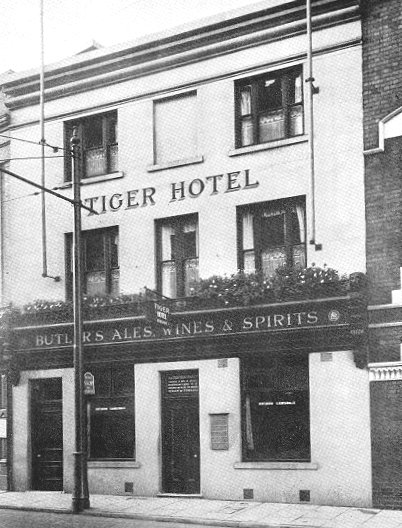
The Tiger Hotel, North Street,
Wolverhampton. |
|
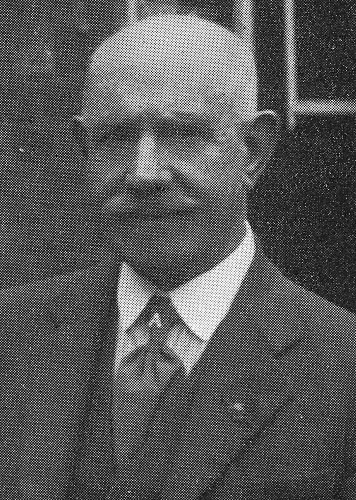
Mr. Arthur Lamsdale. |
|
Five years later he
took over the Rock Hotel, Tettenhall, where
he stayed until 1917, when he took over the
license of the Darlington Arms, Darlington
Street. In 1924 he took over The Spread
Eagle, Victoria Street, a Butler’s house
which has since disappeared owing to street
improvement, and in 1928 he went to the
Tiger, where he remained until his recent
retirement.
Mr. Lamsdale also has
an excellent record of public service. He
was a member of the Bushbury Parish Council
from 1899 to 1901 and was afterwards elected
a member of the Wolverhampton Town Council,
where he remained until 1908. For some years
he was also a member of the Wolverhampton
Board of Guardians, at one time being
vice-chairman of that body. He was also for
many years a member of the Tettenhall Urban
District Council and of the Seisdon Board of
Guardians.
Mr. Lamsdale admits to
no special hobby or pastime, but he has
always been a keen racegoer, and at one time
or another has seen most of the famous races
in the country. His numerous friends will be
glad to hear that although he has retired
from active participation in the business he
will not desert Butlers altogether, as he
will reside with his son-in-law and daughter
(Mr. and Mrs. Frank Bett) at the Vine Inn,
Upper Vauxhall, Wolverhampton. |
|
|
| The roof garden at the Tiger
Hotel. |
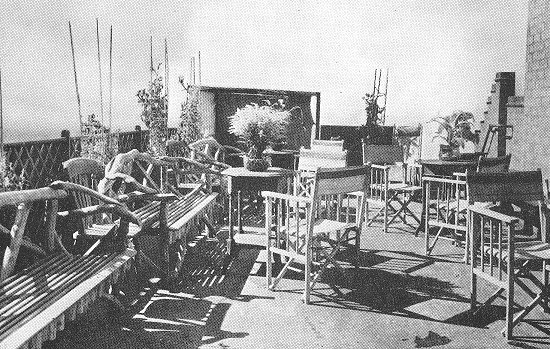 |
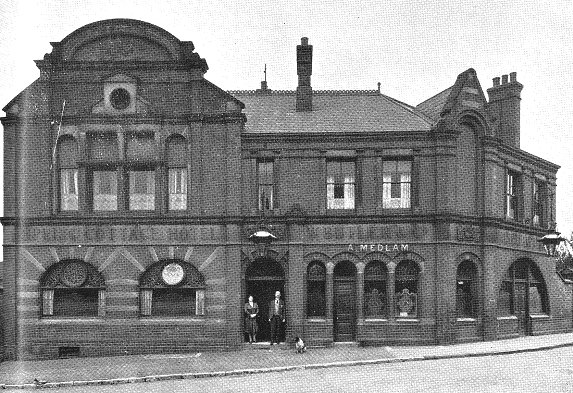 |
The Spring Cottage, Walsall. |
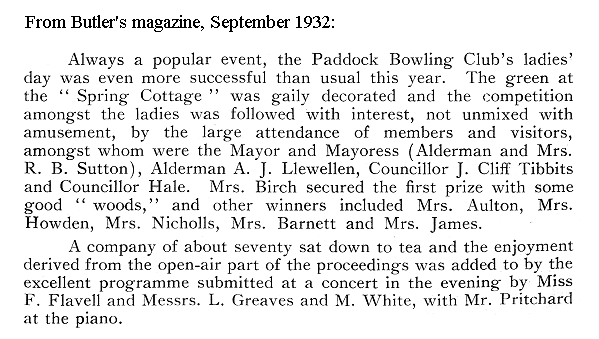
| The Turk's Head, Walsall
Street, Willenhall. |
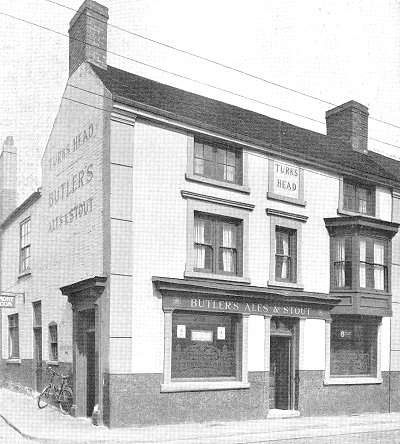 |
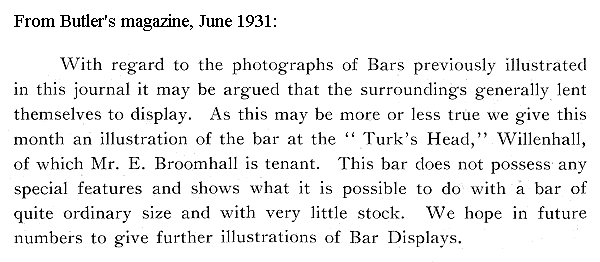
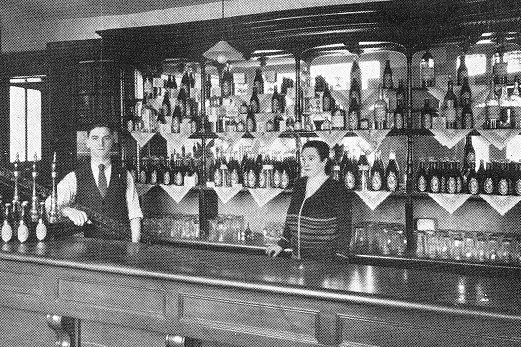 |
The bar at the Turk's Head,
Willenhall. |

|
From the April
1927 edition of Butler's magazine:
Railway
Tavern Bowling Club
Rapid
Progress made in Two Years
The second annual dinner in
connection with the Railway Tavern Bowling Club,
James Bridge, Darlaston, was held on Wednesday
evening, March 2nd, when Mr. W. Reynolds, chairman
of the club, presided. The club did exceptionally
well last season, winning the Darlaston Central
League, Wednesbury and District League (B. Section),
the "Forsyth" Hospital Cup, while they were the
semi-finalists in the Staffordshire Cup Competition.
A capital repast was provided
by Mr. F. A. Wadsworth, of Wednesbury, which was
thoroughly enjoyed. After the toast of "The King",
the Chairman said how pleased he was to see so many
present. He regretted the absence of the President,
and hoped they would see him at the opening of the
green.
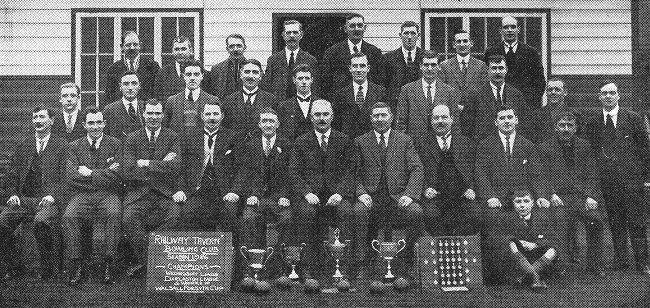
Members of the Railway Tavern Bowling Club.
The balance sheet was presented
by Mr. Davies, and showed that the income was £46
19s. 3d., including a balance brought forward, while
they finished the season with £4 12s. 3d. in hand.
Mr. G. Smith, in proposing a vote of thanks to the
visitors, said how pleased they were to see Mr.
Rubin, and hoped he would be with them for many
years, also Councillor C. Simmonds, Mr. Bignell, and
Mr. Bratt. In responding, Mr. Rubin said he was
delighted to hear the progress the club had made
during the two years of its existence, and it was a
source of surprise to him to hear they had lifted
all the cups available in the district. Mr. Smith
had remarked that he hoped during the summer they
might get a challenge cup, but there was no need to
wait until then as he would give one right away.
Mr. E. Whitehouse said he would
be pleased to give a medal to go with the cup.
Councillor Charles Simmonds also briefly returned
thanks, and said how very pleased he was to know the
club had been so successful. Mr. Harold Rubin then
presented medals to the following: Messrs. J. Shaw,
J. Whitehouse, J. Williams, I. Morris, G. Plant, R.
Watkins, W. George, T. Fereday, R. Griffiths, B.
Darby, H. Blakeway, J. Cotton, P. Holder, J. Davis,
S. Smith, J. Hewitt, J. Griffiths, G. Humpage, A.
Richards, A. Yates, and A. Hales.
Thanks were accorded to the
donors of prizes, the Host and Hostess (Mr. and Mrs.
Alcock), and the artistes. During the evening an
enjoyable musical programme was gone through, the
artistes including Messrs. M. Sweeney, H. Longmore,
S. Booth, B. Griffiths, and H. Thorney, and Captain
Dickenson, while Mr. T. Moran was the accompanist.
|
|
| The Neachells, Willenhall
Road, Wolverhampton. From
Butler's magazine, September, 1932. |
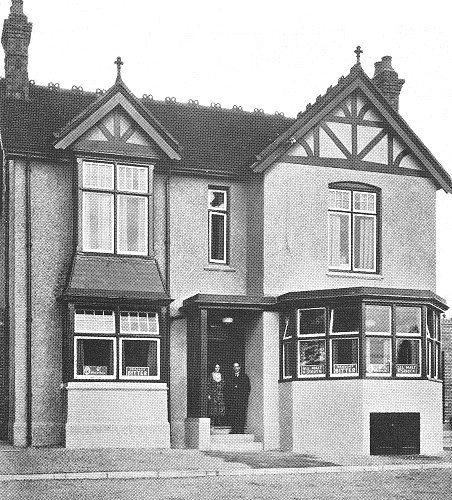 |
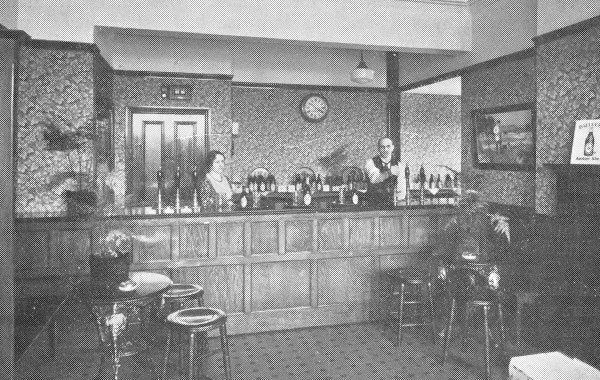
The bar at The Neachells.
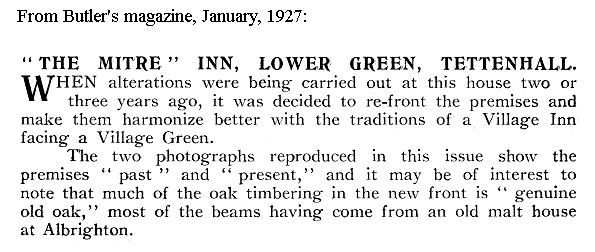
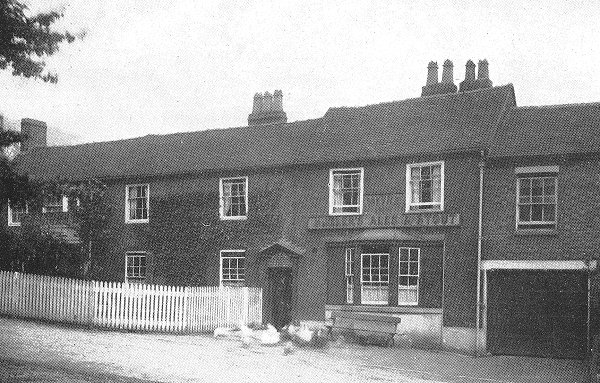
The old Mitre Inn.
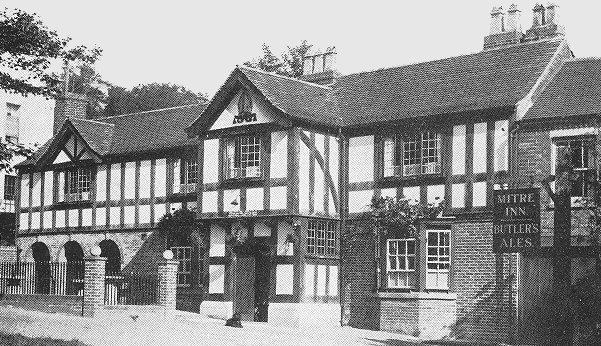
The new Mitre Inn.
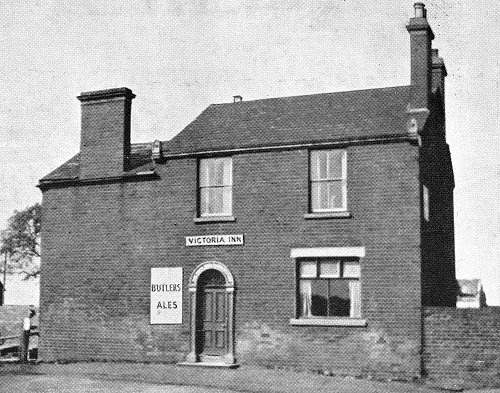 |
From the June 1940 edition of Butler's
magazine:The Victoria
Inn
The Victoria Inn, in Deans
Road, Wolverhampton replaces an old house of
that name which has recently been
demolished.
Owing to
the development of a large housing estate,
the old premises were quite inadequate for
the ever increasing number of Butler’s
customers.
|
|
|
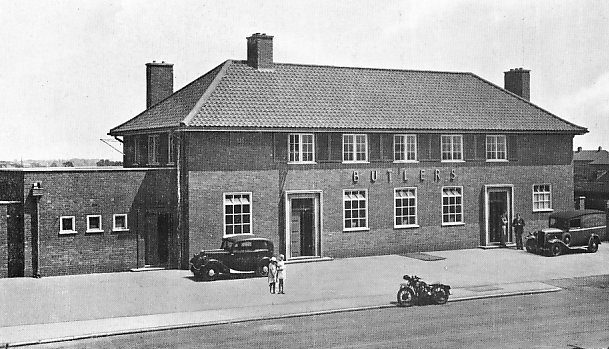
The new Victoria Inn.
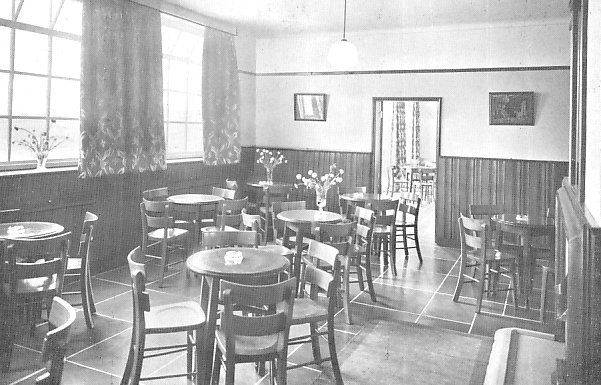
The interior of the Victoria Inn.
| Butlers produced the
following booklet to celebrate the reopening of the
Greyhound and Punchbowl, in Bilston, after restoration
on 7th October, 1936. |
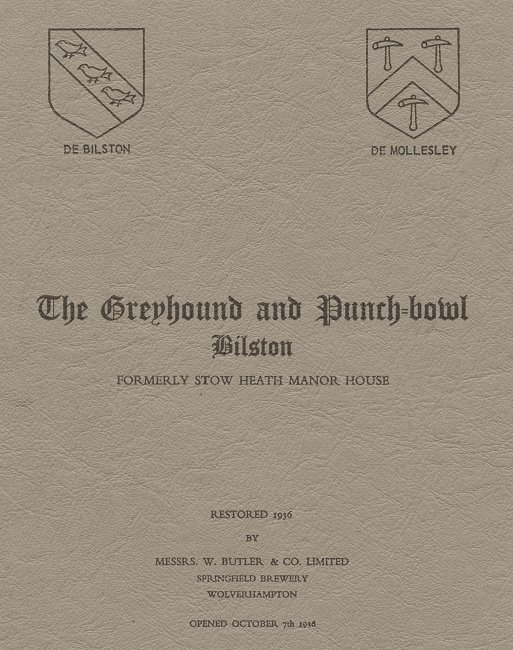
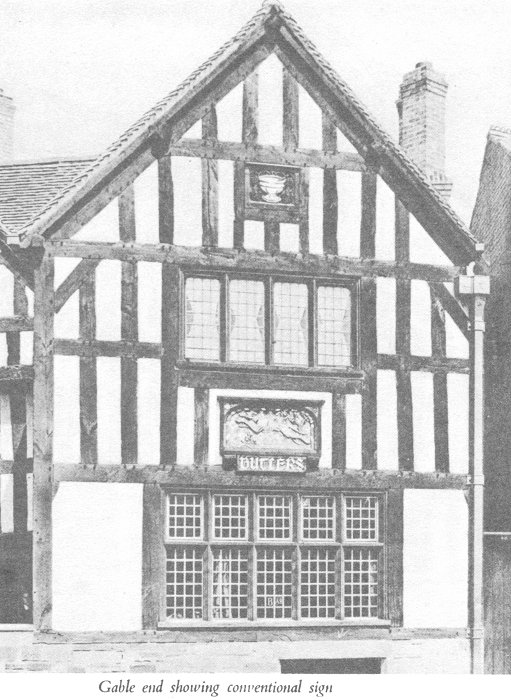
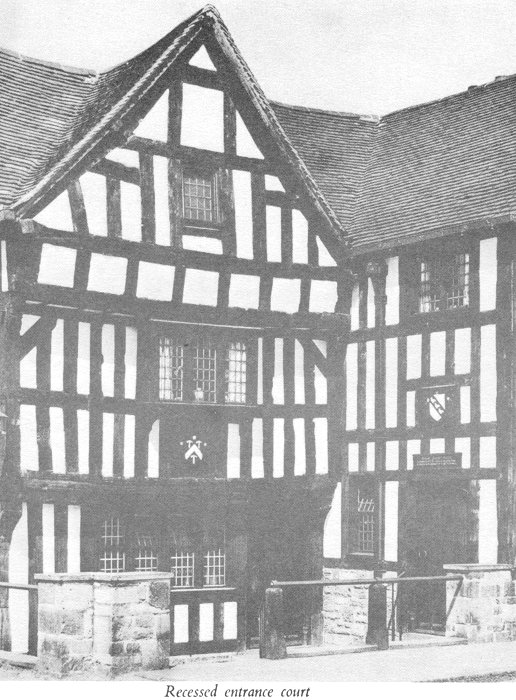
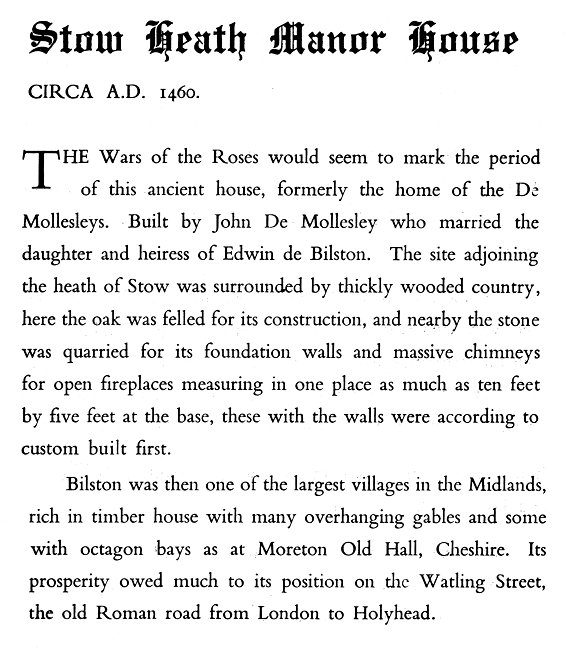
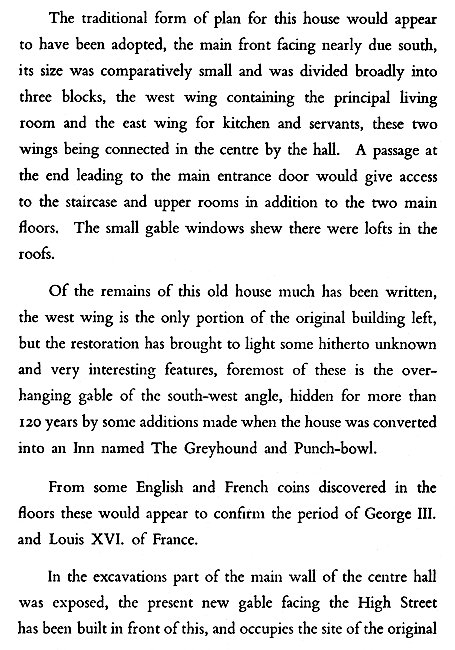
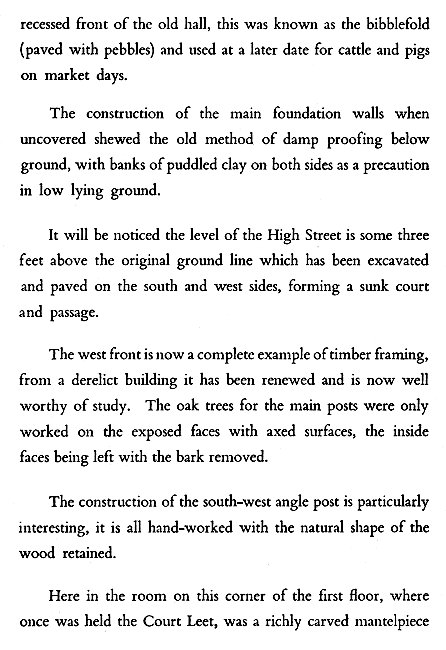
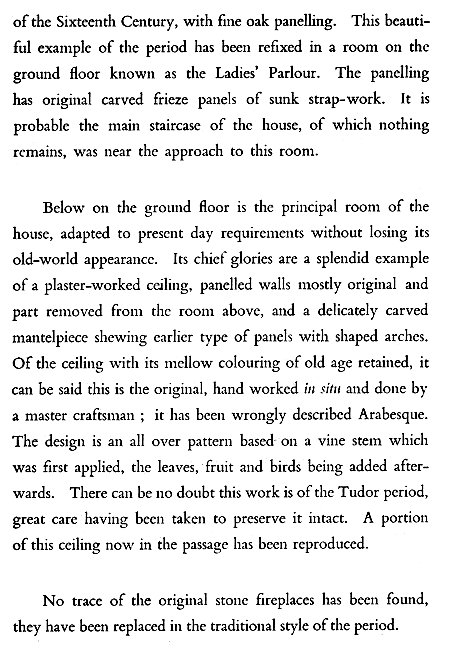
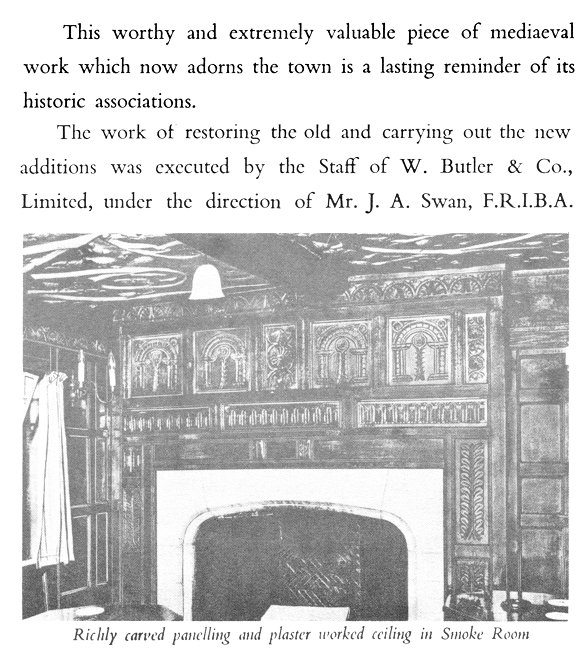
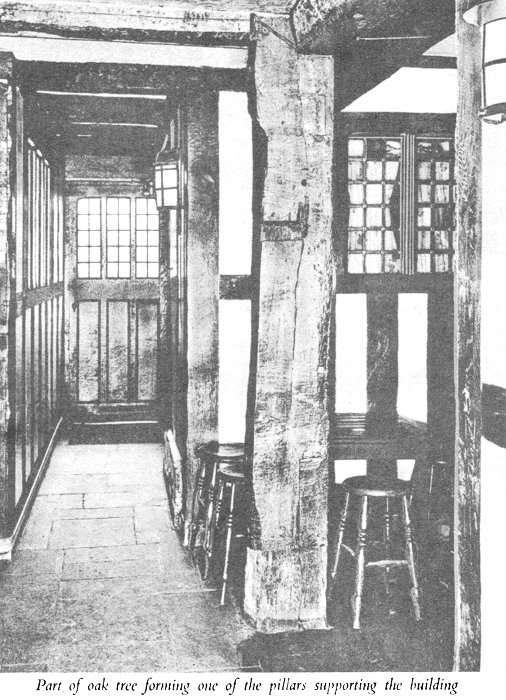
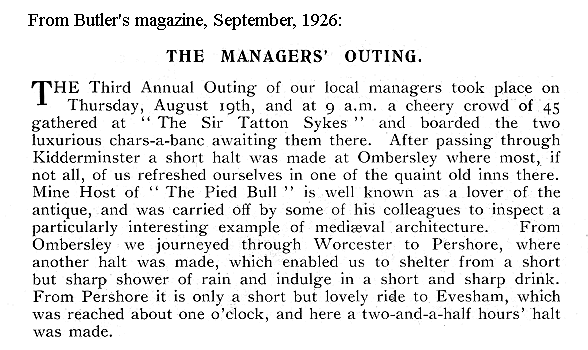
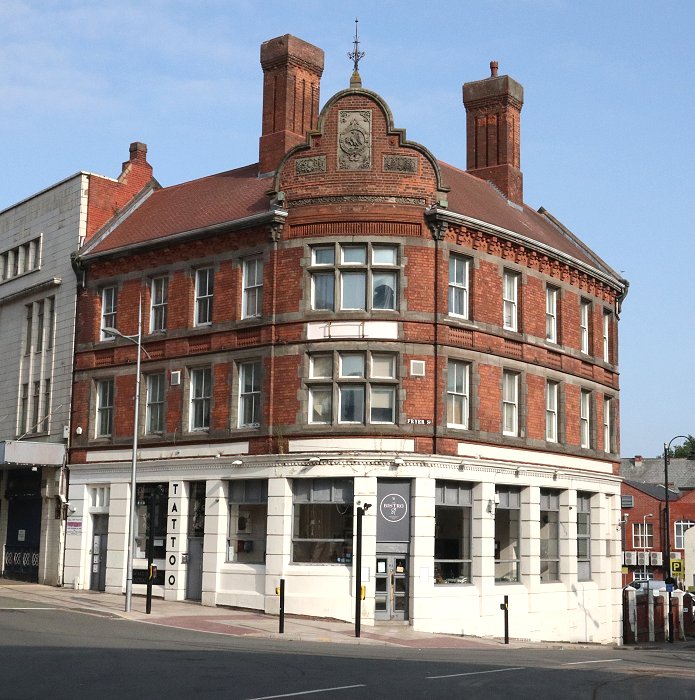
The building on the corner of
Lichfield Street and Fryer Street in Wolverhampton, was
once the Sir Tatton Sykes pub, named after the English
landowner, racehorse breeder, church-builder and
eccentric. It was originally owned by William Butler &
Company Limited and still carries the Butler logo, which
can also be seen in the photo below. |
|
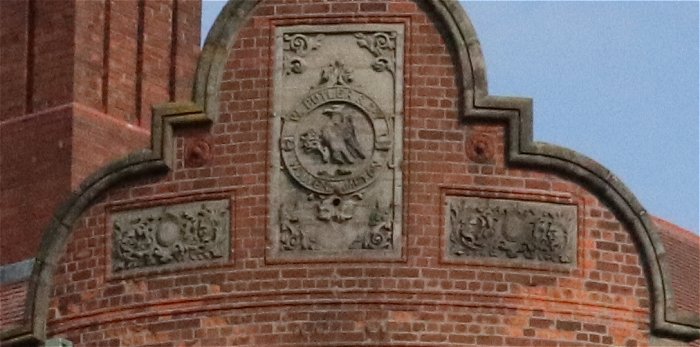
A close-up view of the Butler logo
on the building in the photo above. |
|
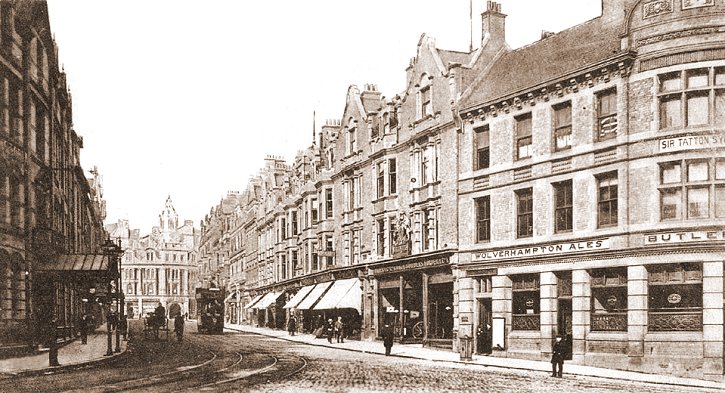
The Sir Tatton Sykes. From an
old postcard. |
| |
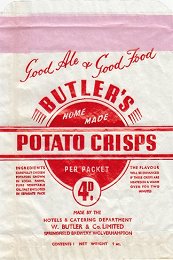
Crisp packet courtesy of Frank
Sharman. |
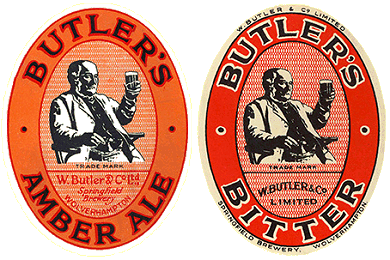 |
 |
Return to
the
previous page |
|